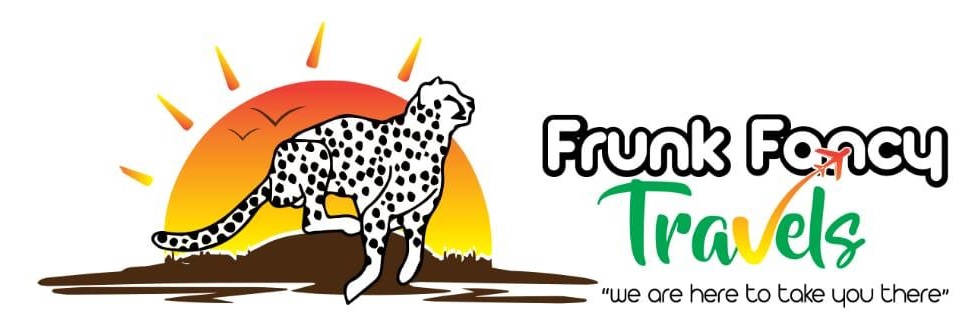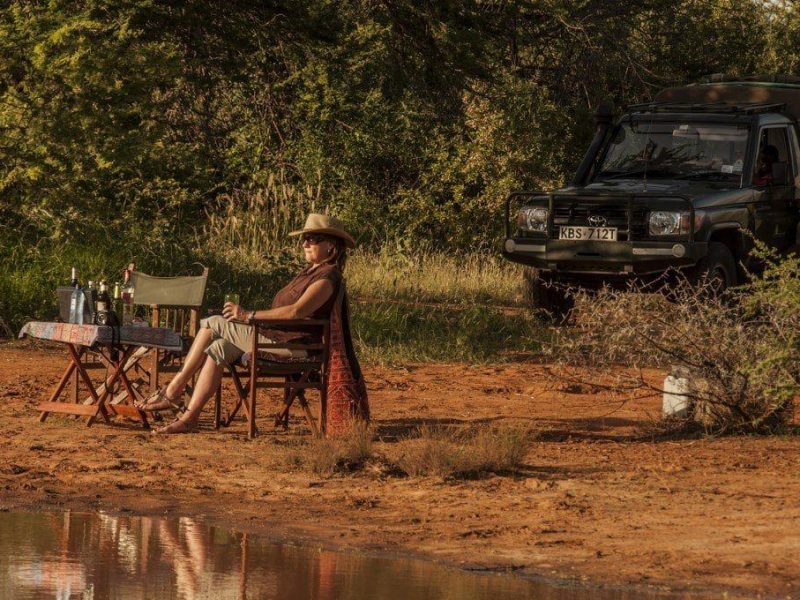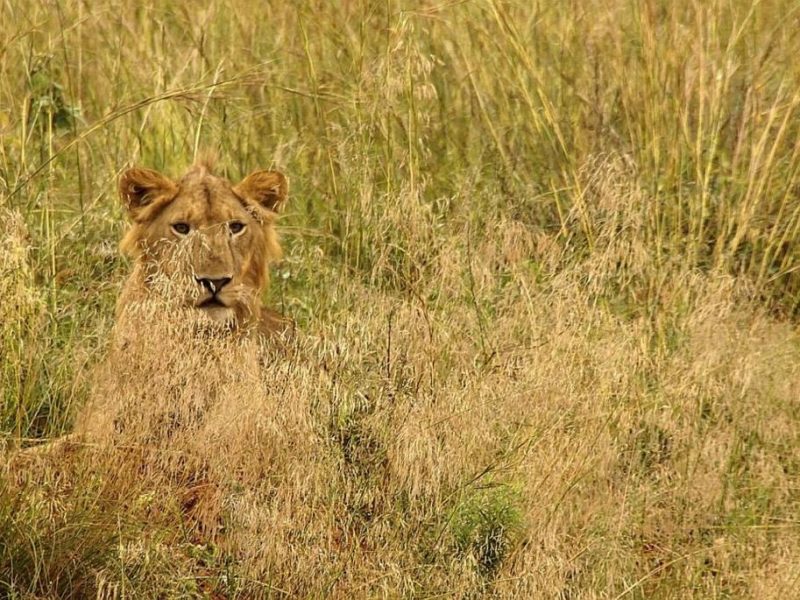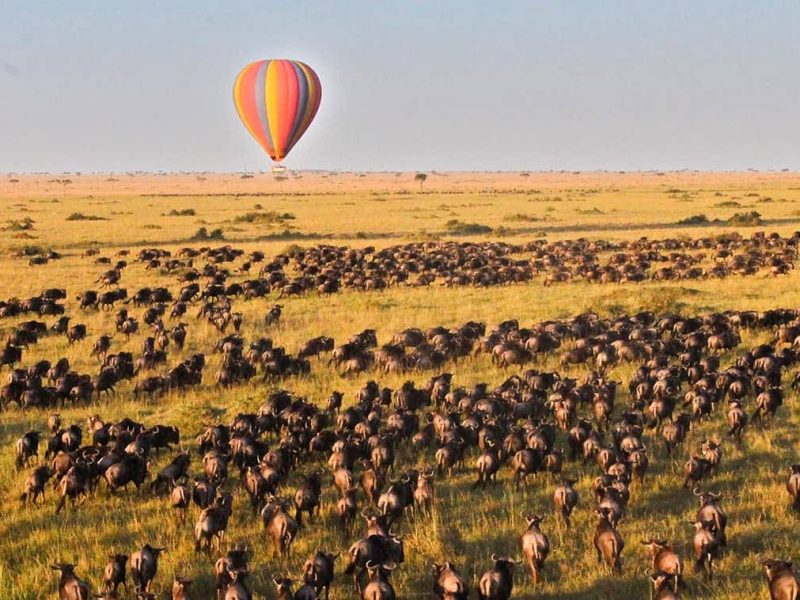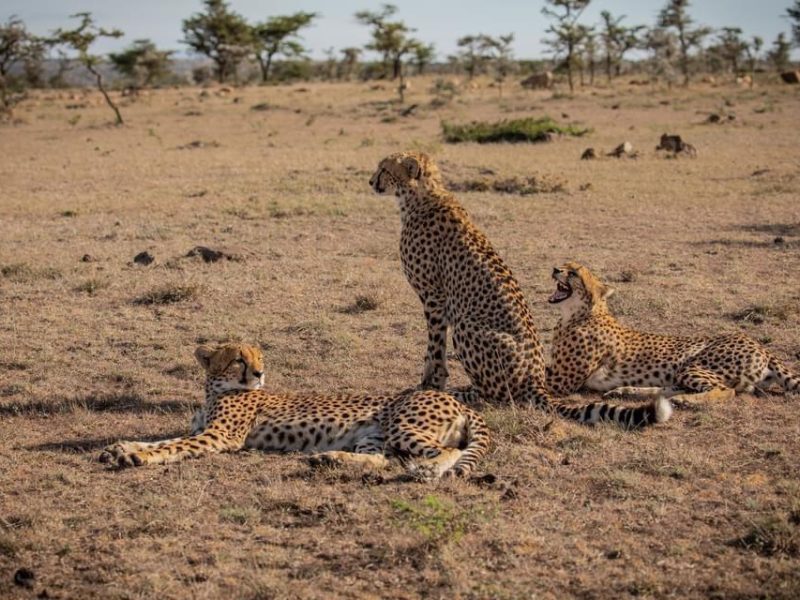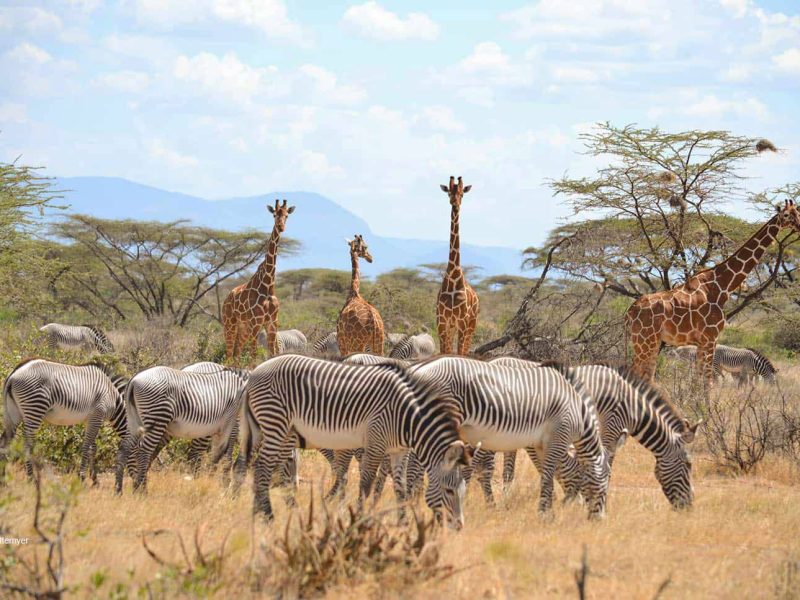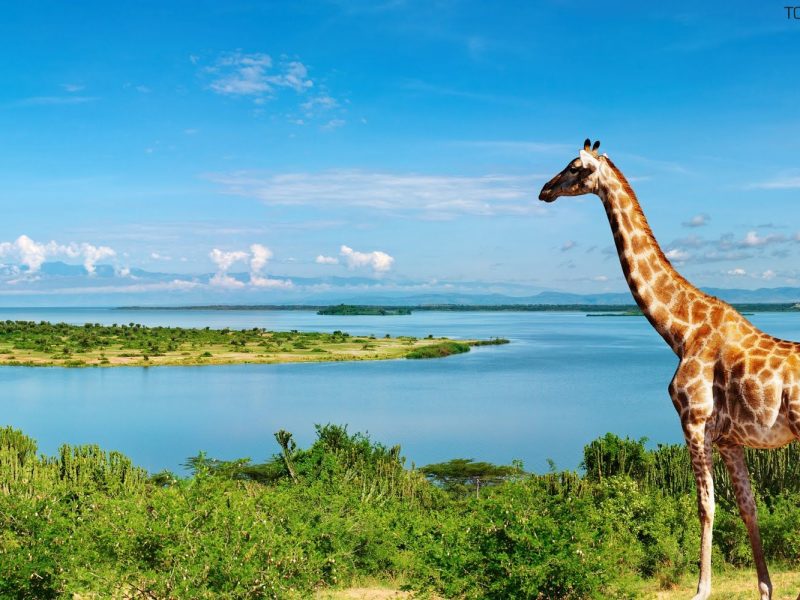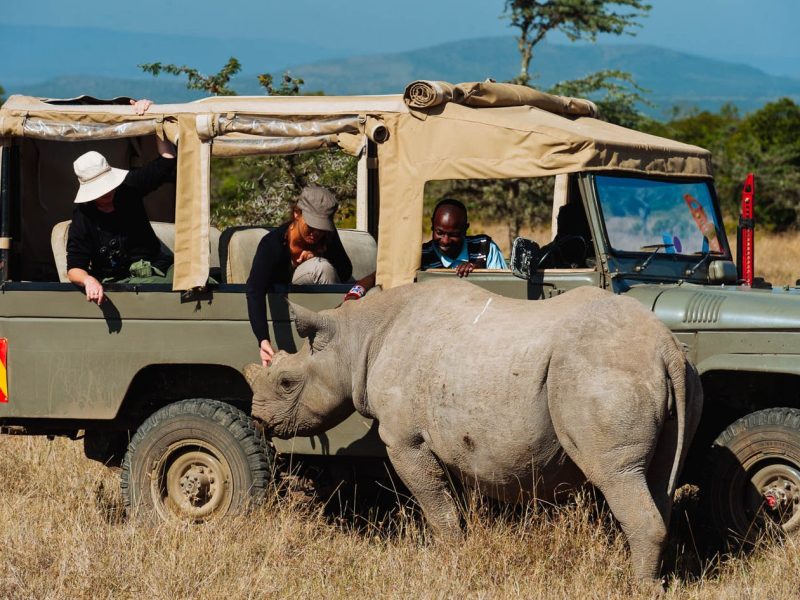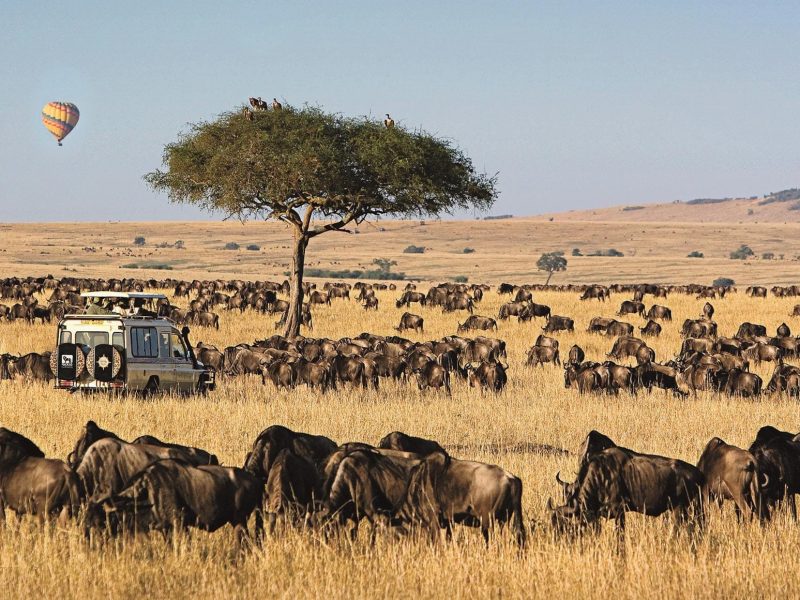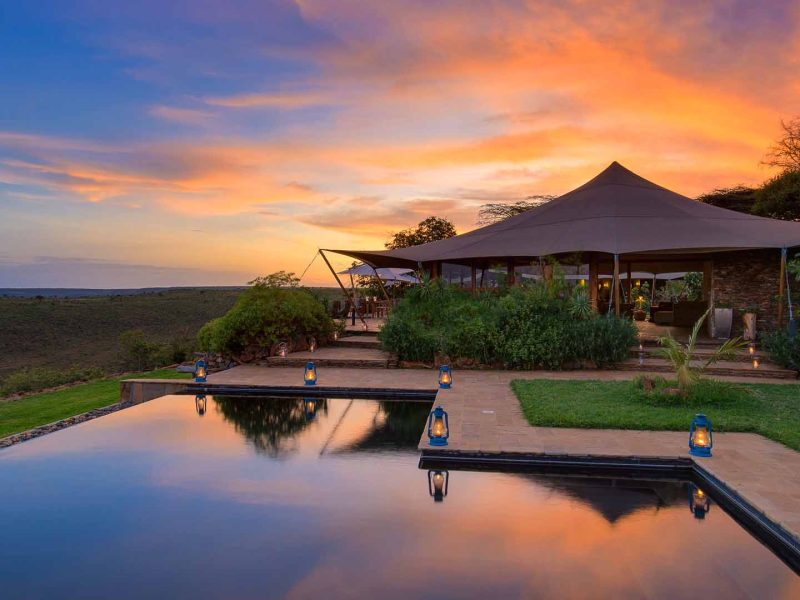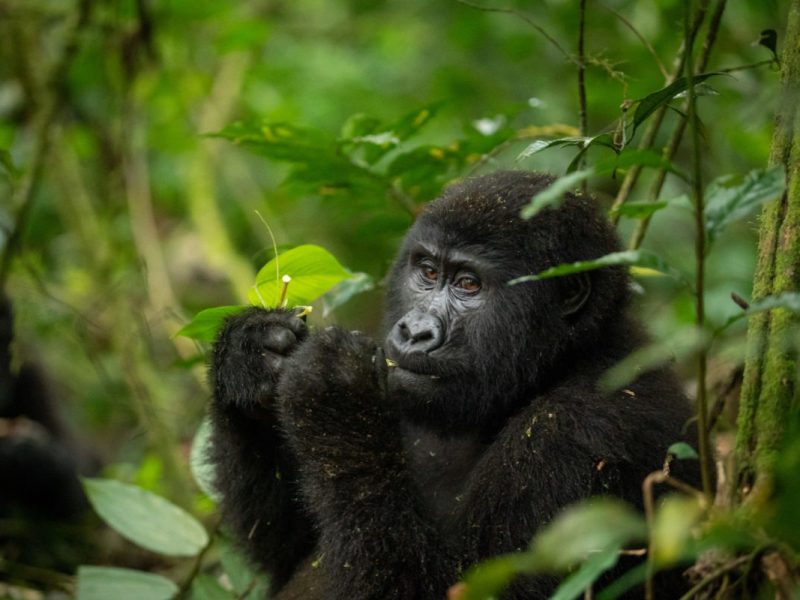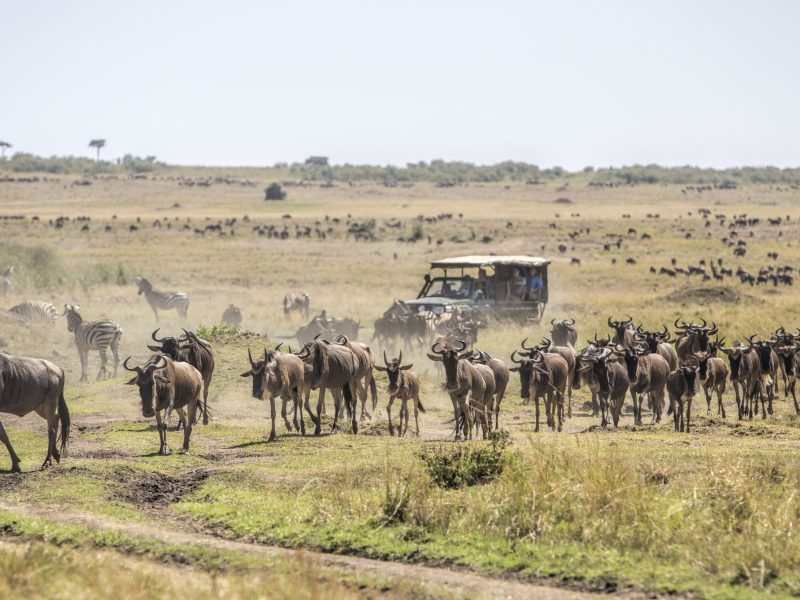Great Wildlife Migration – Maasai Mara National Reserve Kenya
The Great Wildlife Migration is one of the most phenomenal natural spectacles in the world. It is an annual movement by millions of wildebeest, accompanied by large numbers of zebra, Grant’s gazelle, Thompson’s gazelle, elands, and impalas across the greater Masai Mara-Serengeti ecosystem.
From July to September the Mara welcomes the Great Migration of thousands of wildebeest and zebra from the Serengeti in Tanzania to Masai Mara in Kenya. During the wildebeest migration, you will witness how the constant battle for survival makes the Migration Season a particularly exhilarating time to visit Basecamp Explorer Kenya.
The Mara River crossing activity is considered the climax of the migration period. Mara River crossing is an event that will take you through a range of emotions: anticipation, heartache, inspiration, excitement and so much more. The sheer sight of the first herds of animals rushing into the crocodile-infested river will make you long for this wildebeest migration every year.
How does the Great Wildlife Migration work?
The variables are rain and grazing through the seasons plus a few physical barriers.
Refer to the maps. Outlines of Kenya and Tanzania. Then the larger Serengeti Ecosystem map. Note the Serengeti Plains in the south. The western corridor in the west. The Lobo Hills in the north. Seronera is in the center. The Masai Mara is in the far north of the Serengeti-Mara ecosystem.
The rains fall on fertile volcanic soils which are remnants of the volcanoes in the southern Ngorongoro Conservation Area.
The result is short sweet grass which draws the migration rapidly south from Kenya’s Masai Mara. The migration moves down the eastern side of Tanzania’s Serengeti into these sweet short-grass plains.
The wildebeest settle in the southern plains between January and April as there’s lots of food.
In late March or April and May the “long” or heavy rains set in. The depleted southern plains are less attractive than the long grass plains up in the western corridor. As a result, the Great Wildlife Migration moves northwesterly.
Large river crossings on the Grumeti and Mara Rivers occur as the migration heads back north towards the Mara. The season dries out and fresh grazing and water can be found in the far north. The Mara is usually at its best in August, September, and October especially when it’s very dry.
Fresh rains start building around October into November. The migration gets restless as it anticipates the change in season. It moves north and south and back again. This is when we usually get the best river crossing action.
The cycle starts again when the short rains break and result in fresh sweet grass in the southern Serengeti plains. The wildebeest migration moves rapidly south.
How the Great Wildlife Migration really works!
The theory is simple. Seasonal rains and the availability of grazing determines the “clockwise” movement of the migration. The larger ecosystem includes Tanzania’s Serengeti and Kenya’s Masai Mara.
A few physical barriers like the Samiti and Lobo hills, the Grumeti and Mara rivers hinder and alter this “circular” path. Well in reality it’s not quite that simple!
What We Suggest For 2022/2023
-
12 Days Tanzania Safari Tour
$3,400.00 -
6 Days the Best of Tanzania Safari
$2,350.00 -
12 Days Kenya Safari Itinerary
$2,760.00 -
9 Days Classic Kenya Safari
$2,960.00 -
8 Days, 7 Nights Kenya Safaris Adventure
$2,560.00 -
7 Days 6 Nights Kenya Safari Adventure
$2,560.00 -
7 Days Kenyan Safari
$780.00 -
5 Days Beautiful Kenya Safari
$650.00 -
18 Days Best of Kenya Safari Holiday
$2,670.00 -
5 Days Best East Africa Safari Holiday
$1,980.00 -
3 Days Kenya Balloon Safari
$690.00 -
3 Days Maasai Mara Safari Kenya
$565.00
